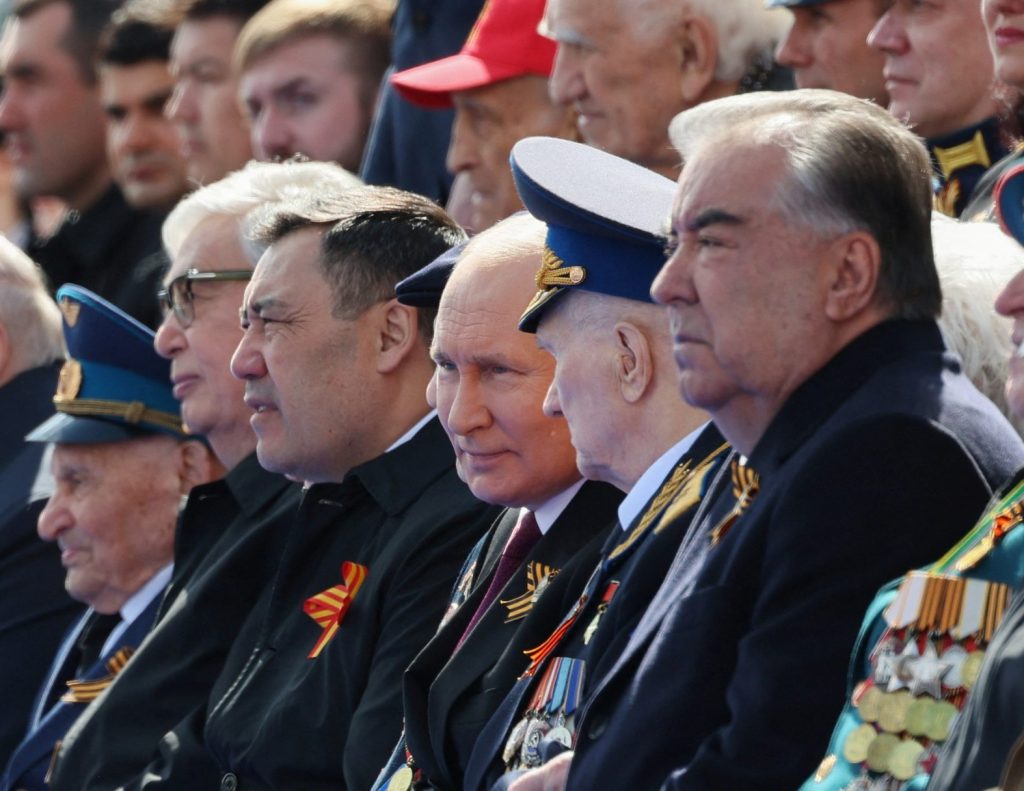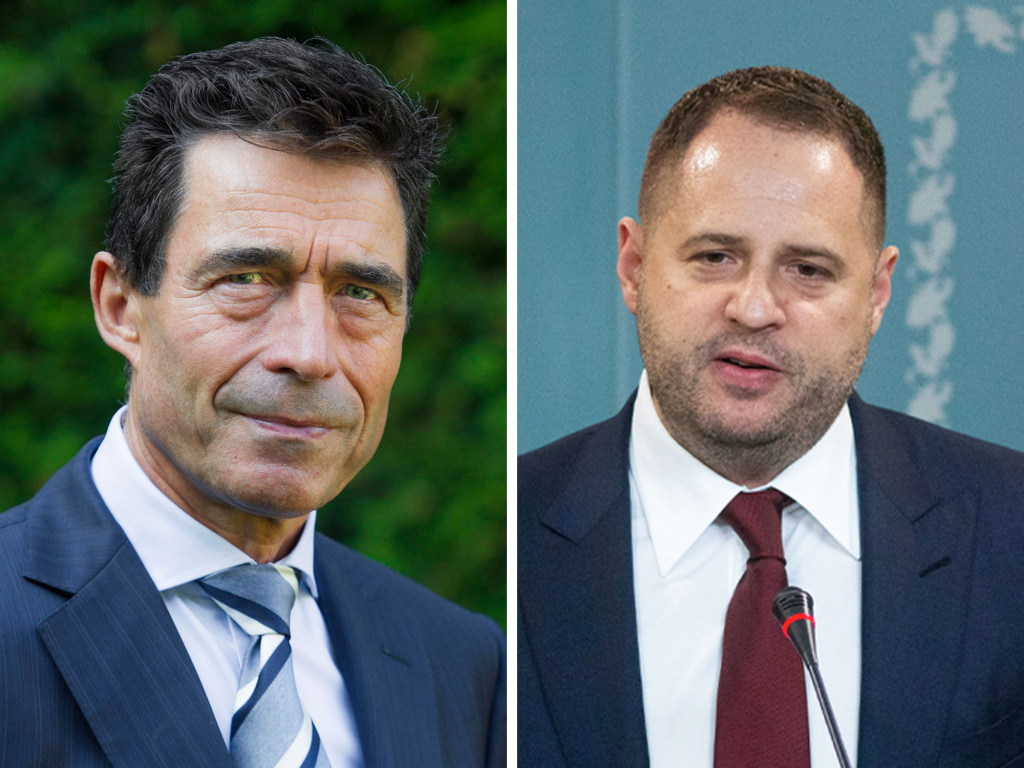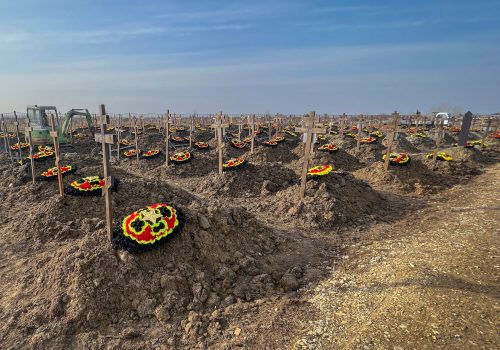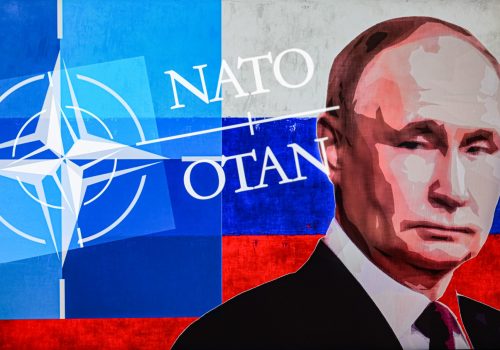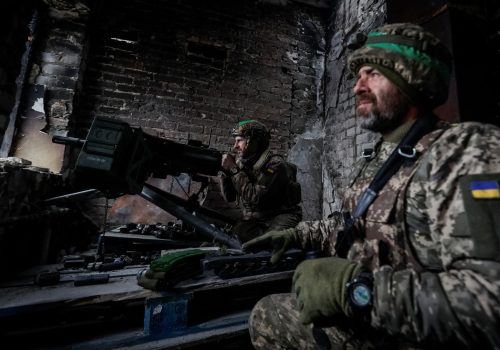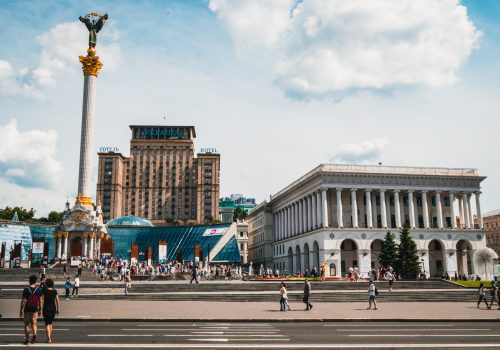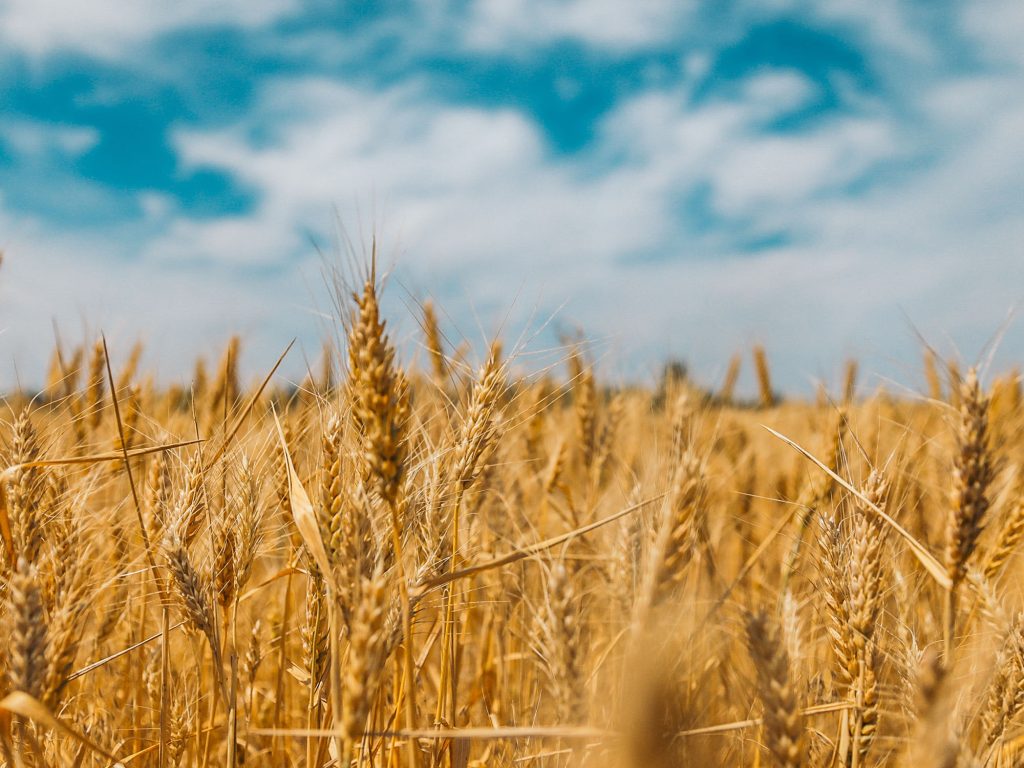
Deciphering Vladimir Putin’s unspoken Victory Day message
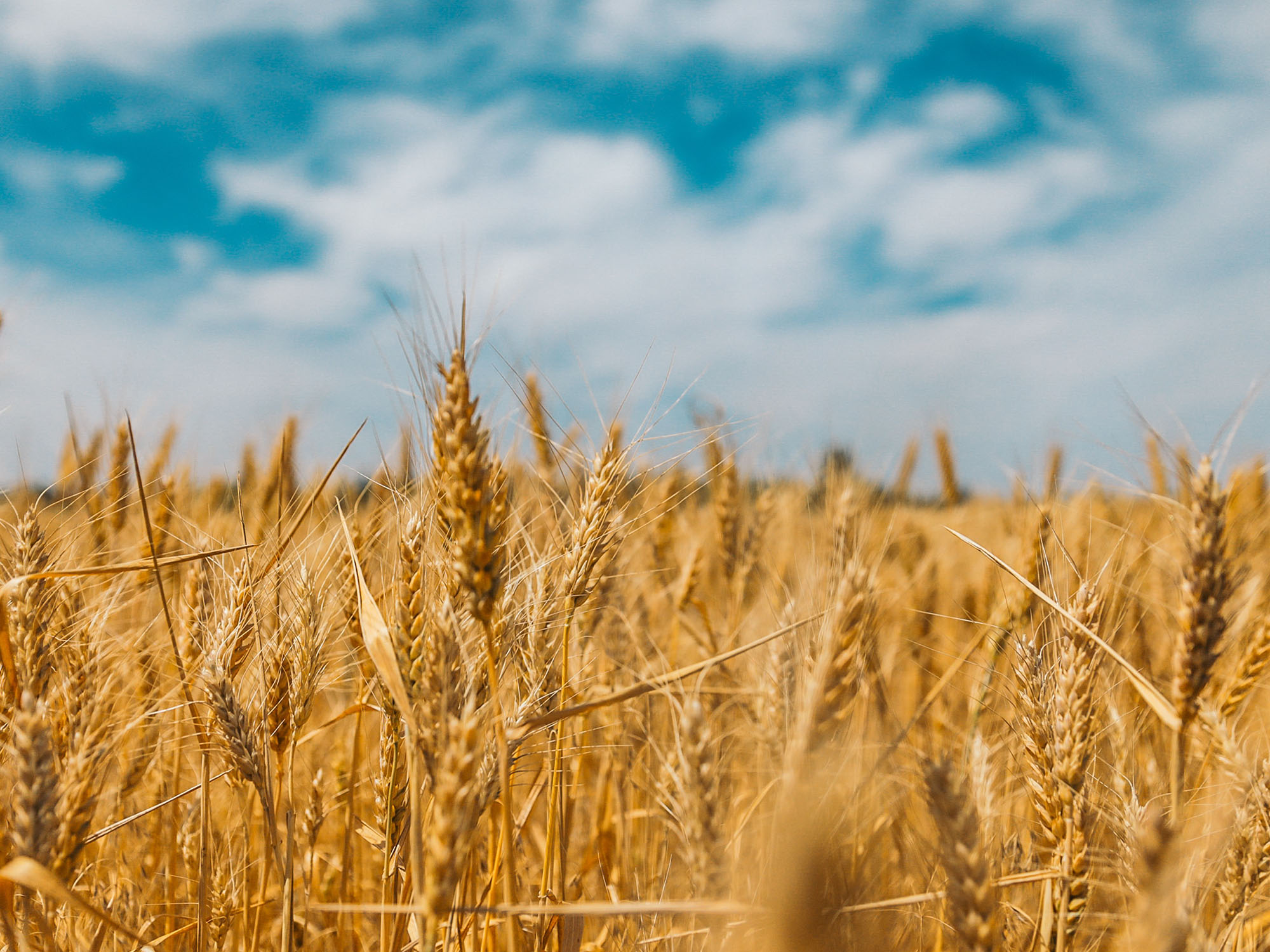
During the Cold War, Kremlinologists would famously attempt to decipher the mood within the Soviet elite by studying the seating plans on public holidays for hints of who was politically in favor and who was potentially on the way out.
This half-forgotten art is now once again in demand as analysts seek insights into the equally impenetrable Putin regime. A look at the seating arrangements during this week’s Victory Day parade in Moscow provides some indication that despite the military setbacks of the past fifteen months, Vladimir Putin is doubling down on his goal of subjugating Ukraine.
Subscribe to UkraineAlert
As the world watches the Russian invasion of Ukraine unfold, UkraineAlert delivers the best Atlantic Council expert insight and analysis on Ukraine twice a week directly to your inbox.
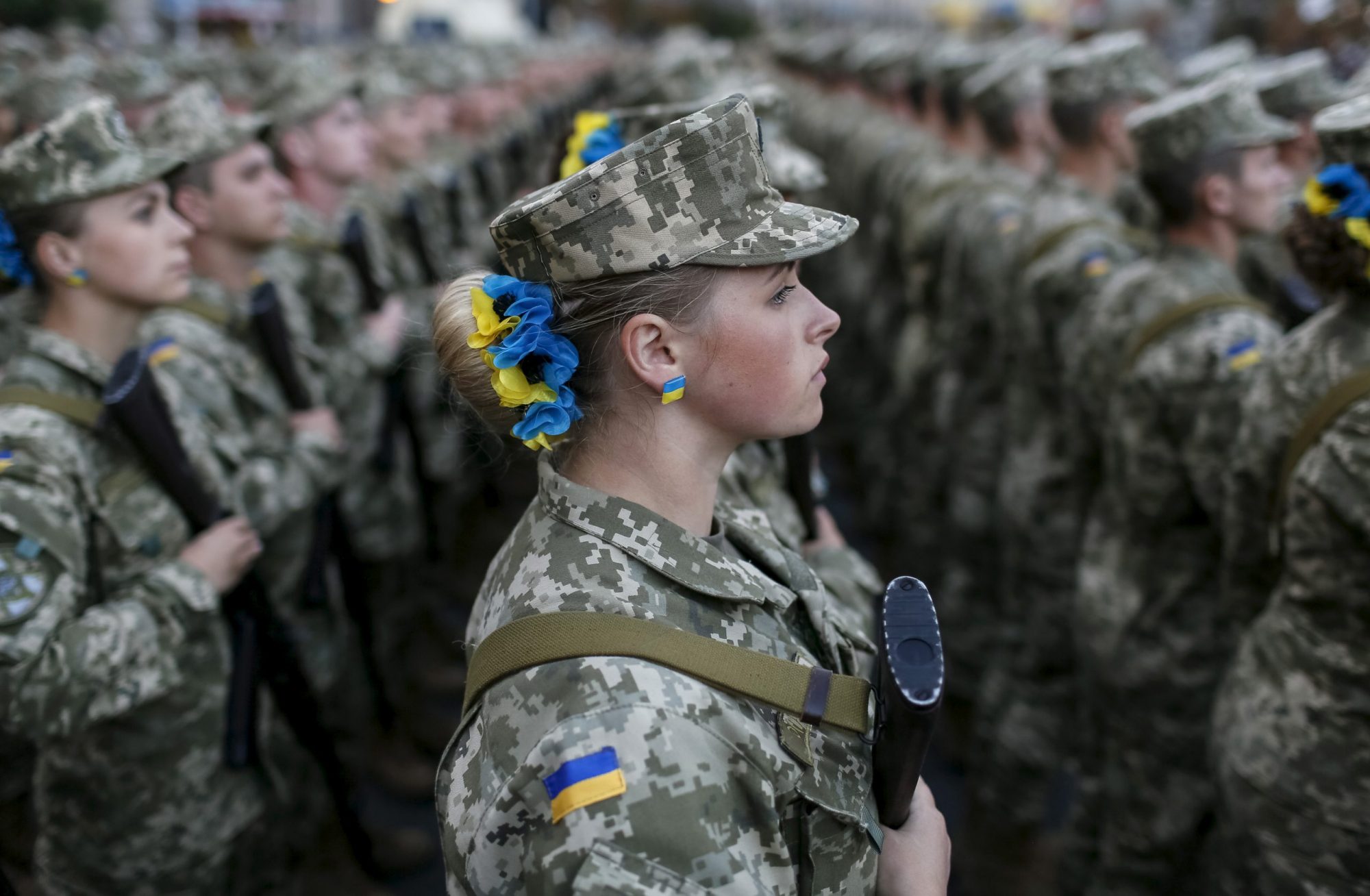
-
-
-
This field is for validation purposes and should be left unchanged.
At first glance, Russia’s annual Victory Day parade on May 9 was a non-event at best and an embarrassment at worst. Putin’s short speech held no surprises, while the presence of just one antique tank during the military parade itself could only be interpreted as evidence of the dire state of the Russian armed forces.
Perhaps the most interesting aspect of the event was the identity of the people selected to sit directly alongside Putin on the Red Square podium. While Victory Day marks the Soviet contribution to the defeat of Adolf Hitler, neither of the elderly gentlemen sitting alongside Putin actually fought against Nazi Germany. Instead, they were both veterans of the Soviet security services who had respectively participated in efforts to suppress Ukraine’s independence movement and crush Czechoslovakia’s 1960s anti-Soviet uprising.
To Putin’s right sat the 98-year-old Yuri Dvoikin, who volunteered for the Red Army during World War II but never actually made it to the front lines. Instead, after training as a sniper in 1944, he was dispatched by the Soviet secret police to Lviv in western Ukraine, where his job was to assist in the liquidation of the Ukrainian nationalist underground. The campaign against Ukraine’s independence movement was particularly brutal, with the Soviet authorities employing terror tactics and large-scale deportations. Although the Ukrainians were able to inflict significant casualties on Soviet forces, they were ultimately defeated by the early 1950s.
On Putin’s left sat the 88-year-old Gennady Zaitsev, who, like Dvoikin, never served in what Russia still refers to as the Great Patriotic War. He was drafted into the Red Army in 1953 and joined the KGB six years later after completing his military service. In 1968, he helped suppress the Prague Spring by, among other things, capturing the Czechoslovak Ministry of Internal Affairs. In the 1970s, KGB chief Yuri Andropov appointed Zaitsev to lead the elite Alfa anti-terrorist unit.
Eurasia Center events
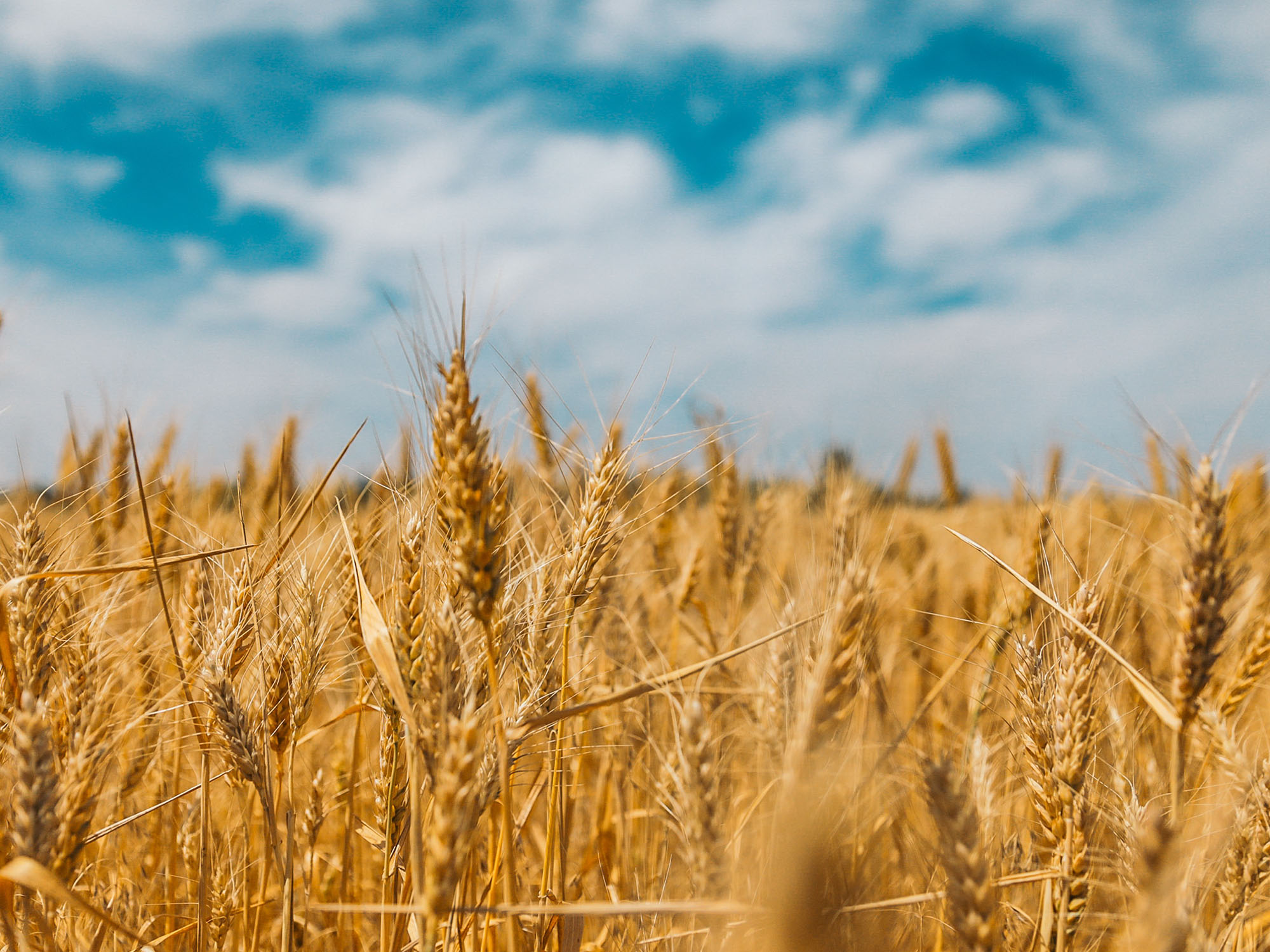
Putin did not have to sit between these two former secret policemen. Indeed, on Victory Day of all days, it would have been far more natural to appear alongside veterans of the war against Hitler’s Germany. It is therefore reasonable to assume that Putin’s choice of neighbors was a deliberate and symbolic move.
For many within the Russian and Ukrainian elites, Putin’s unspoken Victory Day message would have been crystal clear. The Russian dictator was signaling that despite widespread criticism of the Federal Security Service and its bungling role in the invasion of Ukraine, he continues to value his secret police and sees them as the linchpin of his authoritarian regime.
Putin was also signaling to Ukrainians and domestic critics of his invasion that he is willing to do whatever it takes to win. Soviet forces committed innumerable crimes in their suppression of the Ukrainian nationalist movement during the 1940s and 1950s. In 1968, they had no qualms about crushing a country that, like today’s Ukraine, sought to go its own way. By sitting alongside decorated veterans of these two criminal Soviet campaigns, Putin was indicating his approval of their actions and his readiness to embrace similar methods.
The good news is that Putin does not currently appear capable of replicating the bloody Soviet-era crackdowns in western Ukraine and Czechoslovakia. This was all too evident on Victory Day, with the lone T-34 tank rumbling across Red Square serving as the perfect metaphor for Russia’s reduced military might after suffering catastrophic losses in Ukraine. However, the Russian dictator remains defiant and is clearly keen to signal that he has no intention of backing down.
Alexander Motyl is a professor of political science at Rutgers University-Newark.
Further reading
The views expressed in UkraineAlert are solely those of the authors and do not necessarily reflect the views of the Atlantic Council, its staff, or its supporters.

The Eurasia Center’s mission is to enhance transatlantic cooperation in promoting stability, democratic values and prosperity in Eurasia, from Eastern Europe and Turkey in the West to the Caucasus, Russia and Central Asia in the East.
Follow us on social media
and support our work
Image: Participants including Russian President Vladimir Putin attend a military parade on Victory Day, which marks the 78th anniversary of the victory over Nazi Germany in World War Two. Red Square in central Moscow, Russia May 9, 2023. (Sputnik/Gavriil Grigorov/Pool via REUTERS)
